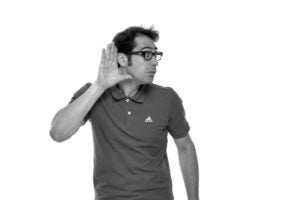
Sebastiaan ter Burg
Learning Objectives
Students will listen for mistakes in spoken statements describing images.
Students will make polite corrections, describing the images.
ELL Levels
Developing and Expanding
Intermediate
ELL Language Skills
Listening, speaking, reading
Materials Needed
Lesson
Introduction
- Review various present tense forms of verbs and nouns/pronouns by having students describe what they see happening around the room. For example: “You are standing. The teacher stands. She is standing at the front of the room. I am sitting. They sit at the back of the room.”
Explicit Instruction/Teacher Modeling
- Model how to politely correct someone who they believe has said something incorrect. For example, “I heard you say ‘She is standing …’ but I think you meant ‘She is sitting…’.” Or “Did you mean to say ‘He is standing’?”
- Have students take turns making incorrect statements about what they see happening in the room, and politely correcting each other for about 5 minutes.
Independent/Group Work
- Show students the images on the Images and Statements Sheet, covering the statements. You can read each statement aloud and have students raise their hand when they hear an error. To see if students can track all the errors, pass out index cards and ask students to raise an index card for every error they hear.
- Alternately, you can pass out the Images and Statements sheet and have students take turns reading the statements aloud to a partner and selecting the correct one.
- Have students describe and correct the errors they hear after each image/statement. Allowing students to talk to a person who is sitting close to them can encourage participation because they are not “on the spot” in front of the whole class, and when everyone is talking at once to their partner, their own mistakes are not as noticeable.
Review and Closing
- Discuss common errors and how to avoid them.

